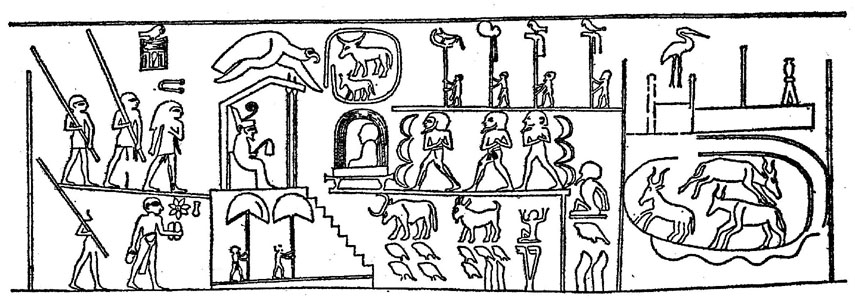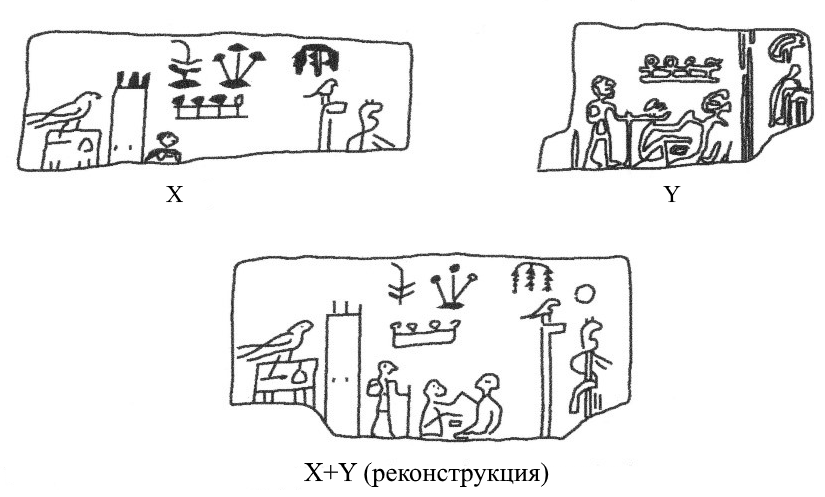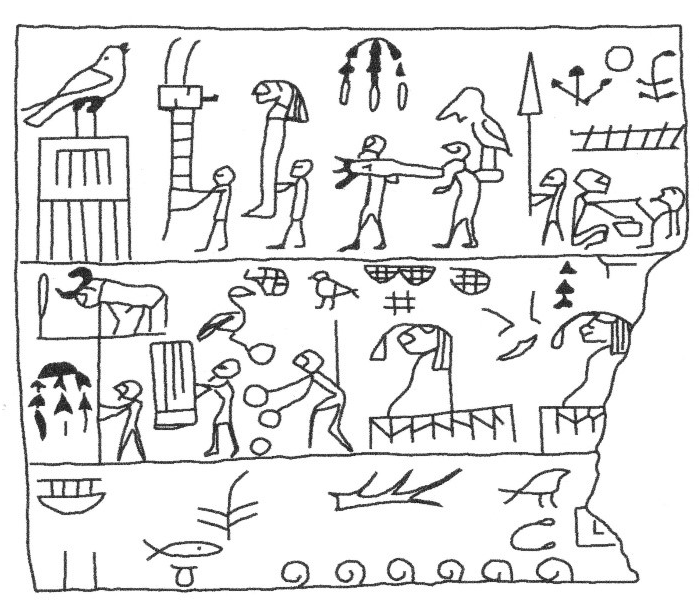The sources for studying the festivals of the Late Predynastic and Early Dynastic (I-II dynasties) periods are depictions and inscriptions on labels, palettes, maces, stamps, stone vessels, as well as architectural monuments and annals. The main cult centres were located in Buto, Sais, Hierakonpolis, and Abydos. Incsriptions of the I and II dynasties on the Palermo Stone note various festivals for gods and king. Among them, there are festivals for Horus, Min, Sokar, Anubis, ‘Shining (appearance) of King of Lower Egypt’ (xat-bity), ‘Shining (appearance) of King of Upper Egypt’ (xat-nswt), ‘Shining (appearance) of King of Lower and Upper Egypt’ (xat-nswt-bity), Heb Sed, victory festivals. It is known that the key rite of the coronation festival was a set of rituals of ‘Unification of the Two Lands’ and ‘Circumambulation of the Walls’. The festivals of ‘Shining’ of king were connected both to the coronation of the ruler and with the following renovation and strengthening of his authority and power. According to N. Millet, that festival was presented in reliefs of the mace of Narmer (I dynasty) and the label of Den (I dynasty). The programme of the festival had something in common with Heb Sed, however, it had one important difference from the Sed festival: they used a single kiosk in ceremonies (not a double one, as in Heb Sed); in such kiosk the king was sitting on the throne or his statue was set (Millet 1990, 56).
 The macehead of Narmer (drawing)
The macehead of Narmer (drawing)
(Emery 2001, fig. 5)
As it is obvious from the scenes of the label of King Horus-aha, found in Abydos, and from the label of his successor, King Djer, found in mastaba 3035 in Saqqara, in the period of the I dynasty, during certain festivals, they made human sacrifices. In both cases, the ritual was connected to the royal funeral cult — it is seen in the depictions of the standard of god Horus (in the label of Horus-aha), signs of sereh (palace), and the Anubis fetish (in the label of Horus-aha), and the mummy-like figure (in the label of Djer).
 |
 |
| Label of Horus-aha from Abydos | Label of Djer from Saqqara (по: Morris 2007:31) |
In the periods in question, an important role was played by agrarian festivals. One of them seems presented in the reliefs of the mace of King Scorpio (0 or I dynasty), where the ruler is depicted standing on the bank of a channel with a hoe in his hands. That ceremony, obviously, was a part of the festival mentioned in the Palermo Stone as the ‘Opening of the lake… killing a hippo’ (line 3, х+8). A scene of killing a hippo by a king can be seen in several monuments of the Predynastic and Early Dynastic periods (for instance, on the stamp of King Den from Abydos). In the period of the Old Kingdom, it would be a favorite motif in reliefs of private tombs. Because hippo was associated with the evil forces, that ritual meant extermination of chaos and restoration of maat, the world order kept by king.
Bibliography
-
Emery W. Arkhaicheskyi Egypet (Archaic Egypt) / transl. from English by N.N. Kamenskaya and A.S. Chentvertulhin. St. Petersburg, 2001.
-
Millet N.B. The Narmer Macehead and Related Objects // The Narmer Macehead and Related Objects Journal of the American Research Center in Egypt Vol. 27 (1990), pp. 53-59 (7 pages) . 1990. Vol. 27. P. 53–59.
-
Morris E. F. Sacrifice for State: First Dynasty Royal Funerals and the Rites at Macramallah’s Rectangle // Performing Death: Social Analyses of funerary Traditions in the Ancient Near East and Mediterranean / Ed. N. Laneri. Chicago, 2007. P. 15–38.
-
Serrrano A.J. Royal Festivals in the Late Predynastic Period and the First Dynasty. Oxford, 2002.
-
Wilkinson T.A.H. Early Dynastic Egypt. N.-Y.; L., 1999.
Tags: Ancient Egypt, Alexandra V. Mironova, Articles, Festivals

 English (United Kingdom)
English (United Kingdom)  Russian (Russia)
Russian (Russia)